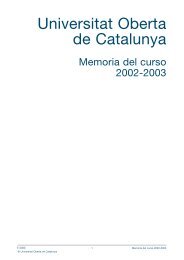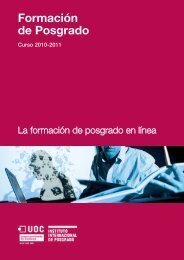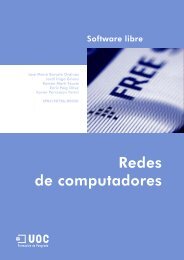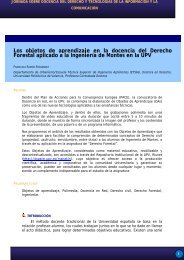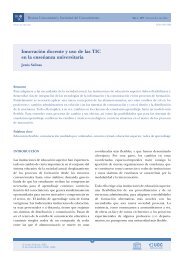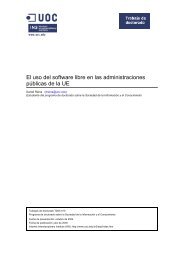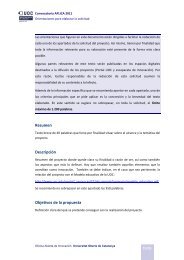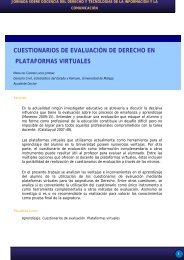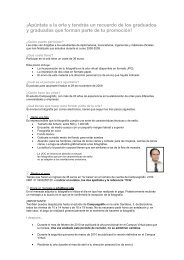e-governance and citizen information - Universitat Oberta de ...
e-governance and citizen information - Universitat Oberta de ...
e-governance and citizen information - Universitat Oberta de ...
You also want an ePaper? Increase the reach of your titles
YUMPU automatically turns print PDFs into web optimized ePapers that Google loves.
E-<strong>governance</strong> <strong>and</strong> Citizen Information 96 Structure <strong>and</strong> Organisationinvolved, the process becomes very inefficient. The situation does not, at the presenttime, change the hierarchical system; rather it opts to maintain it seeking an informalsolution – which complicates the process in or<strong>de</strong>r to save the technical system.Thus we see how technological innovation projects do not necessarily lead to a breakdownof the hierarchical structures of the bureaucratic Administration; rather, they can become aperpetuating element. Along these lines, a theoretically interesting question is posed withrespect to the role of hierarchy <strong>and</strong> technology. From a certain point of view we might consi<strong>de</strong>rthat technology acts as a mere vehicle (or a neutral instrument) of earlier organisationaldirectives. Technology would thus be no more than a mirror that reproduces a pre-existentreality (social, political, or organisational). And the hierarchy, as a central characteristic ofthe bureaucratic system would also be seen to be reflected in the <strong>information</strong> systems. Fromthis viewpoint, currently, the bureaucratic system, with respect to the functioning of its inferiorstructures, would be turning itself into a more horizontal system. The reform of the SACwould also be shaping, at a technological level, this transformation, eliminating the pre-existingsystem of users. In short, the technology would permit, at one <strong>and</strong> the same time, thetransformation or maintenance of the status quo, since its configuration in fact <strong>de</strong>pends onthe context of use, power relations, etc.Another way to interpret the example is to consi<strong>de</strong>r that the hierarchy is not anything in the strictsense; that it is not “something” that pre-exists in the ways it is exercised or in the mechanismsthat are used to reproduce it. Information systems are an essential component of the hierarchy(with other elements retained from the past: <strong>de</strong>cision-making mechanisms, salaries, discretion,access or distribution of resources, etc.). In this sense technology is not merely a neutral elementbut is something that enters onto the field of play also modifying (to a greater or lesser<strong>de</strong>gree) the situation (which is the hierarchy itself). In this situation, hierarchy becomes an elementthat has to be un<strong>de</strong>rstood basically in organisational terms as a partly (<strong>and</strong> increasingly)technological element in which new actors intervene (computer scientists, <strong>de</strong>signers,databases, etc.).http://www.uoc.edu/in3/pic




